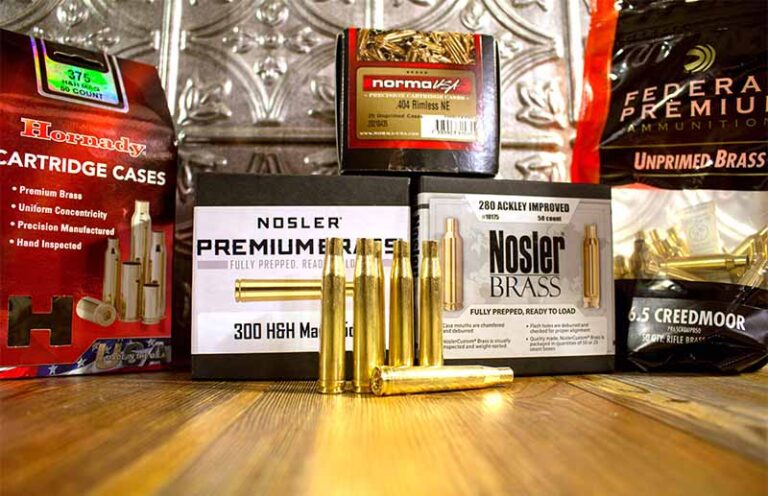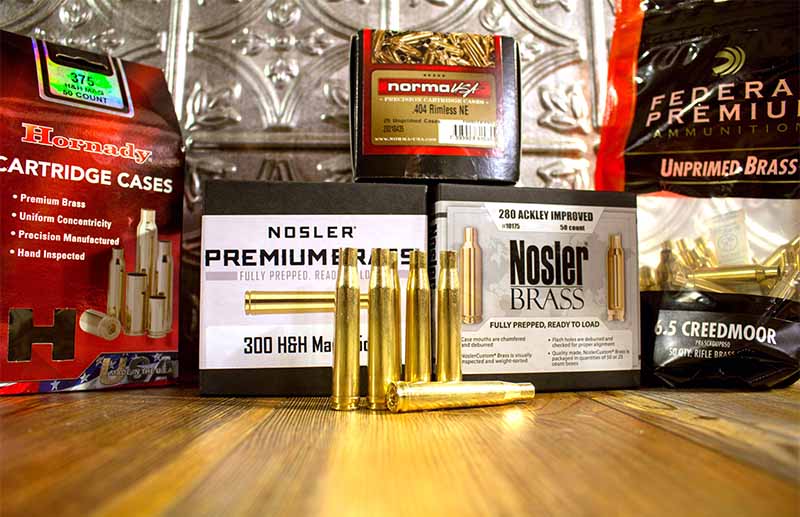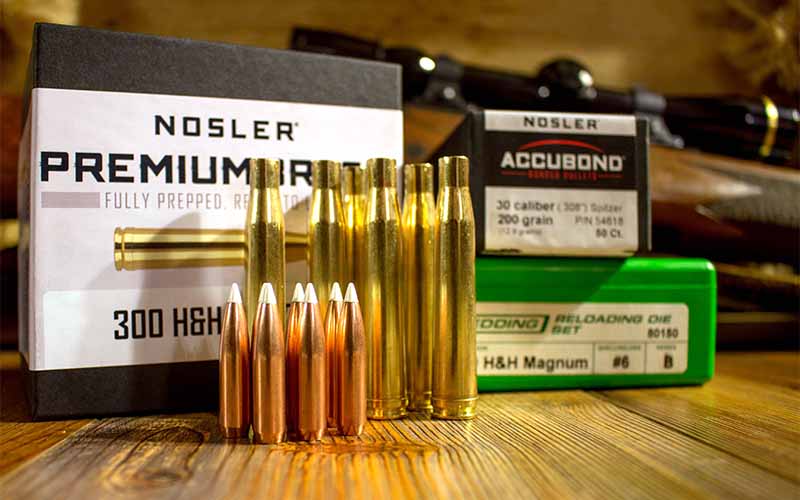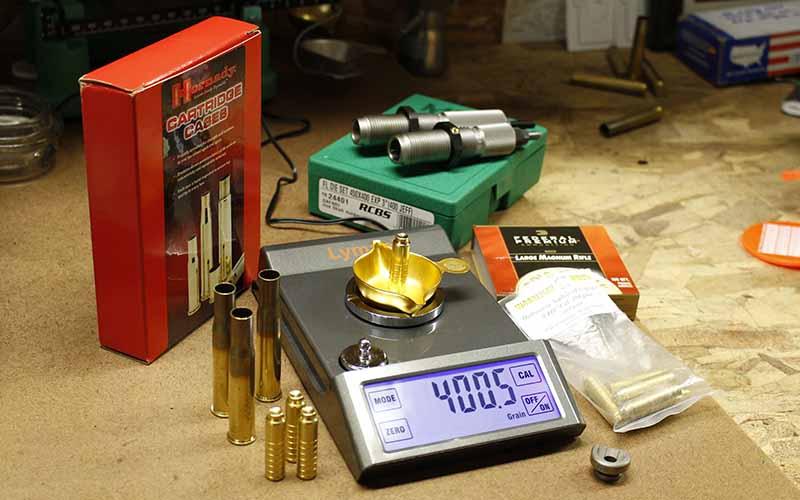
A discussion on the particulars of brass condition when it comes to handload performance.
The big brown truck that brings happy packages lumbered down my driveway, stopping in front of the house. The dogs let me know some danger was present—they bark at anything—and I headed out to greet our friendly driver.
“Something jingly in this one.”
Something jingly, indeed. Today would be a good day. Today was new brass day. If gun owners can proclaim it is “new gun day,” and musicians can have “new guitar day,” then dammit, we reloaders are allowed to have new brass day.

Using new brass might seem counterintuitive to the reloader, as the very name of the action alludes to the fact that the ammo had been previously fired at some point in time. I prefer to use the term “handloading,” as it implies the hand-tuning of the case, powder charge and seating of bullet, rather than just making something functional once again. But, using new brass does pose some issues, which will need to be sorted out.
By no means do I feel we all should be shooting new brass all the time, as I still rework fired cases for my guns to this day. I do prefer to use spent cases from factory ammo that has been fired in my guns.
Looking at a reloading manual, you’ll see the SAAMI specification for case length for each cartridge, and then you’ll see a “trim to” length, a bit shorter than the SAAMI dimension, to allow for the stretching of brass cases. More often than not, I don’t trim my spent cases to that dimension, but to the SAAMI spec, so that if I use new brass, I don’t have to trim it excessively.
Special Treatment
The majority of new brass available for sale will need to be treated almost the same as if it were once fired. I’ve had all sorts of new brass arrive with dented case mouths, burred-up flash holes and other ailments, so I’ve learned to treat it all as if it were once-fired.
The exception to this rule has been brass from Nosler, Norma, Lapua and some of the boutique brass makers, like Kinetics’ match stuff. This doesn’t mean that the Federal, Hornady, Winchester or Remington brass is bad, or inferior … just that the shipping methods sometimes cause some undue harm.

It really isn’t anything that a pass through the resizing die wouldn’t cure, but it’s nice when you unbox some of the Nosler Premium Brass and thoroughly inspect it from stem to stern without finding a flaw. I could just go from box to press to rifle chamber without having any worries; at worst, I might want to put a VLD chamfer on the case mouth if I’m being really picky about precision. I have relied on both Nosler and Norma brass for quite some time for my dangerous game handloads and have never been let down.
Does the new, premium brass make a huge difference in handgun cartridges? One of the best features of handgun cartridges is the simplicity of design: The vast majority of these cases can be reused many times without issue. That said, I do like new brass for my everyday carry ammo, or hunting ammunition for those who pursue big game with a handgun. But for the majority of handgun work—especially for the high-volume shooters—so long as the brass thickness doesn’t vary so much that it’ll affect the crimp, you might not see the same results as you would with a rifle.
New Versus Old Brass
There are instances where new brass just won’t give the same performance as once-fired might; the belted magnum cartridges come quickly to mind.
I once worked diligently with a friend to get his 7mm Rem. Mag. to deliver the accuracy he wanted. He had tried all sorts of factory ammunition, and while it wasn’t terrible—three shot groups printing 1¼-MOA—he decided to try handloads.
My tried-and-true loads weren’t any better than the factory stuff, and I decided to take a closer look at his fired brass. Using a Redding Instant Comparator, we found that the brass was stretching nearly 0.010 inch upon firing, so we grabbed one of the Redding Competition Shellholder sets and used the one with the correlative depth to keep the shoulder as close to the chamber dimensions as possible.
This brought the group size down to just over ½-MOA, which is more than likely the result of better chamber concentricity. In this example, once-fired brass was assuredly better than new stuff of any brand. This is common to many of the belted cases with a steep shoulder.

My .300 H&H Magnum, with its slight 8½-degree shoulder, doesn’t mind headspacing off the shoulder at all, but it does show a definite preference for longer bullets. Loading the 200-grain Federal Terminal Ascent or Nosler AccuBond into virgin Nosler brass will give ¾-MOA all day long. The gun likes lots of bearing surface, so 180-grain copper bullets perform well. It does, however, prefer bullets in the 195- to 200-grain range, and I really didn’t find much difference between new brass and fired and resized brass.
Many dangerous game hunters won’t even consider handloaded ammunition, let alone once-fired brass. The theory—as I’ve heard it proclaimed—is that those hunters want no possibility of a failure to feed because the brass wasn’t resized properly and would be willing to sacrifice a bit of accuracy for the guarantee of hearing a bang during a charge. Based on the size of the targets and the short distance at which they’re taken—I’m talking brown bear, lion, Cape buffalo, elephant, hippo—a 2-MOA gun has plenty of accuracy. Virgin brass is no issue at all in this application and can provide a means of using boutique projectiles that aren’t offered in factory loads.

While I still hoard spent brass—I will pick it up no matter what it is and sort it out later—I do love new brass day, especially for my favorite old rifles, like my Heym Express .404 Jeffery and Winchester 70 .300 H&H Magnum. I’m also happy that component brass, of any brand, is starting to show up again, putting smiles on the faces of reloaders once again.
Editor's Note: This article originally appeared in the May 2023 issue of Gun Digest the Magazine.
More On Reloading:
- Tips For Reloading the .30-06 Springfield
- Loving Your Luger: Reloading the 9mm Luger
- Handloading: Tips For Reloading The 7mm Rem Mag
- How To: Tips For Reloading the .223 Remington
- Reloading Bench: The Inside On Reloading For The .30-30 Winchester

Next Step: Get your FREE Printable Target Pack
Enhance your shooting precision with our 62 MOA Targets, perfect for rifles and handguns. Crafted in collaboration with Storm Tactical for accuracy and versatility.
Subscribe to the Gun Digest email newsletter and get your downloadable target pack sent straight to your inbox. Stay updated with the latest firearms info in the industry.

![Best Concealed Carry Guns In 2025 [Field Tested] Wilson Combat EDC X9S 1](https://gundigest.com/wp-content/uploads/Wilson-Combat-EDC-X9S-1-324x160.jpg)


![Best 9mm Carbine: Affordable PCCs [Tested] Ruger Carbine Shooting](https://gundigest.com/wp-content/uploads/Ruger-Carbine-Shooting-100x70.jpg)
![Best AR-15: Top Options Available Today [Field Tested] Harrington and Richardson PSA XM177E2 feature](https://gundigest.com/wp-content/uploads/Harrington-and-Richardson-PSA-XM177E2-feature-100x70.jpg)
